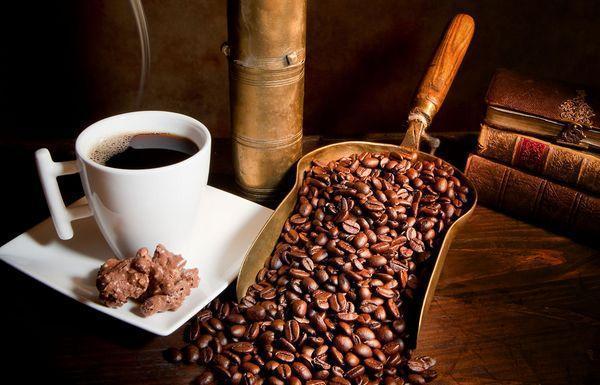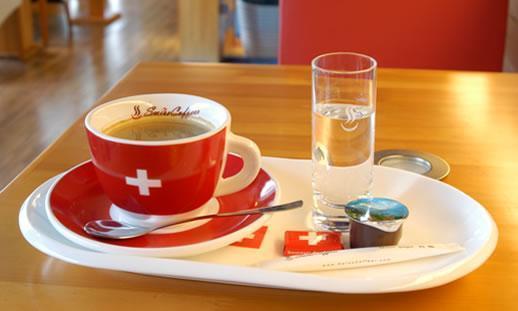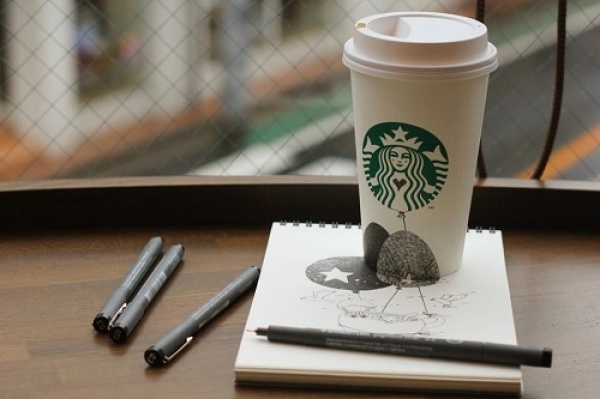How to taste coffee

The delicacy of coffee always coexists with a warm heart. tasting a good cup of coffee in the right way will not only make it easier to appreciate the taste of coffee, but also live up to the heart of the brewer. A good cup of coffee should be clear and bright & transparent. Concentration and turbidity are different. Generally speaking, the causes of coffee turbidity are nothing more than the following:
1. Mix in defective coffee beans
2. Poor baking
3. Coffee beans or powder have been kept for too long
4. Excess brewing (the brewing temperature is too high, the brewing time is too long, and the way of flushing is too rough.) .
When you put a spoon into a good coffee, the light of the spoon will sparkle; then scoop up and drip back, you will find that at the moment of falling, the coffee liquid will form a jewel-like bead across the surface, which can be called a cup of moist and transparent coffee.
Of course, to be more professional, you need to know some coffee tasting terms.

Coffee tasting terms
The coffee tasting here actually refers to black coffee, which is very similar to wine appreciation:
Clean: coffee has no earthy taste, no wild taste, no major flaws and uncomfortable features.
Balance: features that are complex and interesting enough, but none that stand out.
Texture, taste (Body, Mouthfeel): texture refers to the thick, sticky touch of coffee in the mouth, which is proportional to the amount of colloid suspension in coffee. Since the texture is felt throughout the mouth, we use "rich" to describe thick coffee and vice versa as "thin".
Complexity (Complexity): refers to the different levels of characteristics that coexist in the same cup of coffee, high complexity, indicating that you can feel more kinds of sensory stimuli; it should be noted that these feelings include the afterrhyme and are not necessarily limited to the feelings of drinking.
Depth (Depth): this is a more subjective adjective that refers to resonance and appeal beyond sensory stimulation, which may be caused by meticulous sensations or complex interactions between different senses.
Bitter (Bitter): this is the characteristic of deep baked beans, which, like sour taste, is not necessarily uncomfortable, but the sensation of the whole mouth and throat, not just the tongue. Generally speaking, friends who drink American coffee or Saifeng coffee may use "strong" to describe this feature.
Sweet: it has two meanings. The first is to feel the stimulation of sweetness, which is commonly known as sweetness; the other means that between baking in a deep city and baking in Espresso, the taste of glycol, which is partly astringent and rich in texture, is reminiscent of sugar; the tip of the tongue does not have to react.
Smooth: a sweet Espresso that is slightly sour and bitter, with a little sugar and can be drunk comfortably without milk.
Acidity (Acidity): the taste of coffee left on the tip of the tongue after it is imported. The word "sour" looks eye-catching, but in fact, the original flavor and fresh vitality of coffee beans, like wine, are contained in its sour taste. The acidity of fresh coffee, with the aroma of fruit, is like the natural acid in lemon, grape, apple and other fruits, which is pleasant and fresh.
Aroma: the mellow smell of coffee in the wandering air. From roasting, grinding to brewing, coffee beans try their best to release their fragrance at every stop of its long journey. Therefore, you might as well make good use of your sense of smell and experience this fragrant journey with coffee.
Flavor (Flavor): connect the above three, collage into the impression of coffee. Some coffee has a variety of flavors, sour, sweet and bitter, while others are extremely sour, completely occupying your sense of smell and taste. There are also people who are used to using "feeling" to dominate judgment-does coffee have its own style? Does it have a unique forest or fruit aroma? Is your temperament gentle or masculine? This is the most intimate and emotional stop in all the tasting processes.

Coffee tasting steps
Coffee tasting steps are also very similar to red wine appreciation, which can be roughly divided into the following steps:
Take a sip of cold water first to clean your mouth. Ice water can help coffee taste emerge brightly, so that every taste bud on the tongue is fully prepared to taste the coffee.
Please drink coffee while it is hot, because the tannin in coffee is easy to change during cooling, and the taste becomes sour, which naturally affects the flavor of coffee.
After a sip of black coffee, every cup of coffee you drink takes five years to blossom and bear fruit, and it goes through complicated procedures such as harvesting, roasting and so on, coupled with the careful preparation of coffee brewers. Therefore, drink a sip of black coffee without sugar and cream while it is hot, and feel the flavor of the coffee before applying fat powder.
Then add the right amount of sugar, take another sip, and finally add cream.
Drink the right amount, coffee contains caffeine, so drink the right amount!
Enjoy a good cup of coffee according to the above process, you can not only experience the different levels of coffee taste, but also help to improve the ability to appreciate coffee.

Coffee Life Network Tips:
How much coffee should I drink?
There is a view that, in addition to tasting delicious coffee, we should not only pay attention to the appropriate temperature, but also have appropriate portions.
Drinking coffee is not like drinking or juice, a full cup of coffee, watching it will lose interest in drinking. Generally speaking, it is only seven or eight minutes full for the right amount, moderate amount of coffee will not only stimulate the taste, after drinking it will not have a "greasy" feeling, but endless aftertaste.
The average amount of coffee to drink is 80-100cc, while three cups a day should be the best choice for coffee drinkers.
Important Notice :
前街咖啡 FrontStreet Coffee has moved to new addredd:
FrontStreet Coffee Address: 315,Donghua East Road,GuangZhou
Tel:020 38364473
- Prev

Vietnamese dripping coffee
If you have time, make your own authentic Vietnamese iced coffee. DIY's happiness is everywhere. What you need to prepare are: medium granulated coffee powder (to avoid leaving too much waste when dripping), dripping pot, fresh milk, ice cubes (be sure to be big enough, because coffee can only give out the best flavor under the alternating action of hot and cold), one tall and one short transparent glass (for
- Next

Introduction to American Coffee for tasting Coffee
Some friends have questions about the practice of American coffee. Dilute a cup of Espresso with water. Is it American coffee? Uncle Dou's answer: it is indeed so. Let's first take a look at how American coffee appears and is named. American coffee was born after World War II, when the Americans ended the war in Europe, many troops came to southern Europe, they could not drink Espresso, so
Related
- How did the Salvadoran coffee industry develop in Central America?
- What exactly does the golden cup extraction of coffee mean?
- The Origin of Coffee flower
- [2023 Starbucks World Earth Day] there are more meaningful things besides free Starbucks coffee!
- What kind of coffee is there in Spain? 9 Flavors of Spanish Coffee
- Aromatic African coffee| Kenya's coffee culture and historical production area
- Liberica Coffee Bean knowledge: the characteristics of Liberian Coffee beans of the three original species of Coffee beans
- The origin and formula of Spanish latte introduces the taste characteristics of Bombon coffee in Valencia, Spain.
- How to adjust the solution of over-extracted coffee
- What is the tasting period of coffee beans? What is the period of coffee and beans? How should coffee wake up and raise beans?

